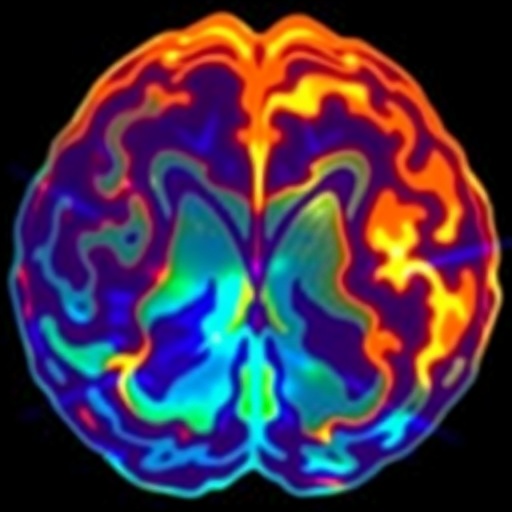The neonatal period is a critical phase in human development, particularly for preterm infants. During this vulnerable time, various medical conditions can arise that affect their health and long-term outcomes. One significant concern is the development of hydrocephalus, a condition characterized by an accumulation of cerebrospinal fluid (CSF) in the brain’s ventricles. Recent research, published in Pediatric Radiology, has shed light on the role of ultrasonography in detecting hyperechoic ependyma, a factor potentially linked to ependymal injury and complex hydrocephalus in preterm infants.
Hyperechoic ependyma refers to an abnormal echogenicity of the ependymal lining within the ventricles of the brain. In healthy infants, this structure appears homogeneous on ultrasound. However, the present study, conducted by Shapira-Rootman and colleagues, explores how deviations from this norm can signal underlying neurological issues. The study employs advanced sonographic techniques to investigate the correlation between hyperechoic ependyma and severe neurodevelopmental outcomes.
The importance of this study cannot be overstated. As neonatal care advances, identifying subtle markers of neurological compromise early in a child’s life has profound implications for treatment and long-term prognosis. A subtle change in echogenicity could be the first indicator of broader complications. Therefore, the study’s authors emphasize the need for rigorous sonographic assessments in preterm infants. These assessments can provide essential information, guiding clinicians in the management of potentially complicated conditions such as hydrocephalus.
Ependymal injury itself can occur due to a variety of factors, including intraventricular hemorrhage, inflammation, or metabolic disturbances. The ependyma serves as a critical barrier and plays a vital role in the homeostasis of CSF. When it becomes damaged, it may not only fail to perform its protective function but also contribute to increased CSF production or hinder its absorption. This cascade of events can eventually lead to the development of hydrocephalus, necessitating further intervention.
Ultrasound, particularly in the form of cranial sonography, is an invaluable tool in the detection and monitoring of brain abnormalities in preterm infants. The non-invasive nature, combined with the ability to provide real-time imaging, makes it a preferred method in neonatal intensive care units. In the present study, the authors meticulously assess the parameters of hyperechoic ependyma using sonographic criteria, establishing a framework for interpreting these images. Their findings could lay the groundwork for standardized diagnostic protocols, increasing the reliability and efficiency of ultrasound as a diagnostic tool.
In their analysis, Shapira-Rootman et al. present compelling evidence that hyperechoic ependyma is not just a benign finding. Instead, it may be linked to varying degrees of ependymal damage and subsequent neurodevelopmental impairments. Their research illustrates the association between echogenicity and the severity of hydrocephalus, highlighting the critical need for vigilance when assessing preterm infants displayed with these sonographic features. Clinicians must be prepared to initiate early interventions, preventing potential long-term sequelae.
The implications of these findings extend beyond individual patient care, influencing broader clinical practices. As more evidence accumulates around the significance of hyperechoic ependyma, healthcare providers can refine their protocols for monitoring and managing preterm infants at risk. This could potentially lend itself to the development of targeted therapies, improving outcomes for one of the most fragile patient populations in the medical field.
Moreover, this research emphasizes the interdisciplinary nature of neonatal care, drawing connections between radiology, neurology, and critical care disciplines. By fostering collaboration across specialties, medical teams can enhance their understanding of the interplay between clinical findings and diagnostic imaging. Such collaboration ensures the most comprehensive care is delivered to these vulnerable infants.
In addition, the findings highlight a need for ongoing education for healthcare practitioners involved in neonatal care. Regular training in interpreting ultrasound results and recognizing the patterns associated with hyperechoic ependyma may improve the detection and management of hydrocephalus. As medical technology advances, ensuring that practitioners are equipped with the latest knowledge and skills is critical in enhancing care quality.
The study represents a significant step forward in understanding the subtle yet impactful signs of neurological compromise in the neonatal population, particularly for those born preterm. While much progress has been made in neonatal care, there remains a need for constant vigilance and innovation. The work of Shapira-Rootman and colleagues serves as a powerful reminder of the crucial role that imaging techniques play in managing complex medical conditions. As the medical community continues to learn from such valuable investigations, the hope is to dramatically alter the neurodevelopmental trajectories of preterm infants.
Through meticulous research that merges clinical expertise with innovative imaging techniques, the authors provide much-needed insights into the early detection of neurological impairments. They pave the way for future studies that may further elucidate the intricacies of ependymal injury and its consequences, as well as explore novel therapeutic approaches to safeguard the future of these fragile patients.
As we advance into an era of precision medicine, integrating robust findings from studies like this one may lead to personalized strategies for managing preterm infants susceptible to conditions like hydrocephalus. While the challenges of caring for this population remain profound, such research offers a beacon of hope for timely interventions and improved clinical outcomes.
In conclusion, Shapira-Rootman et al.’s study is an essential contribution to neonatal medicine. By illuminating the associations between hyperechoic ependyma and ependymal injury, they underscore the importance of vigilant ultrasound evaluations in preterm infants, potentially changing the landscape of how these complex conditions are understood and treated. As further studies build upon these findings, there is a promise of a brighter future for the most vulnerable among us, inspiring ongoing research and dialogue within the medical community.
Subject of Research: The relationship between hyperechoic ependyma and ependymal injury associated with complex hydrocephalus in preterm infants.
Article Title: Hyperechoic ependyma in preterm infants: sonographic features associated with ependymal injury and complex hydrocephalus.
Article References:
Shapira-Rootman, M., Bar Efimovski, O. & Merhav, G. Hyperechoic ependyma in preterm infants: sonographic features associated with ependymal injury and complex hydrocephalus.
Pediatr Radiol (2025). https://doi.org/10.1007/s00247-025-06414-z
Image Credits: AI Generated
DOI: https://doi.org/10.1007/s00247-025-06414-z
Keywords: Hydrocephalus, hyperechoic ependyma, preterm infants, neurodevelopmental outcomes, sonography, ependymal injury.




